#meteorological and hydrological services
Text
Tackling the climate crisis- World Meteorological Day 2024 Ceremony.

The ceremony embraces all the key players involved in tackling the climate crisis: the UN family. National meteorological and hydrological services, youth and civil society, policymakers and the private sector.
15:00-15:25 - Welcome and introduction – by WMO Secretary-General Prof. Celeste Saulo and WMO President Abdulla Al Mandous and Agi Veres, Director, Geneva office, United Nations Development Programme, and launch of the UNDP climate action campaign.
15:25-15:30 - How the weather has changed – Philippe Jeanneret, Swiss television weather presenter
15:30-15:45 - Zebraside Conversation - Storytelling and Science. Boaz Paldi, UNDP Chief Creative Officer and Lauren Stuart, WMO Scientific Officer
15:45-16:25 - High-level panel discussion on "How to keep the 1.5° goal of the Paris Agreement alive?" (see below)
Panelists: Marie-Claire Graf, Future Leaders Network (Moderator)
Prof. Celeste Saulo, Secretary-General of WMO
Agi Veres, Director, Geneva office, United Nations Development Programme (UNDP)
Matthew Wilson, Permanent Representative and Ambassador of Barbados
Rosa Sangiorgio, Head of ESG, Pictet Wealth Management
16:25-16:35 - Q&A with the audience in the room
16:35-16:40 - Saving lives, at the forefront of climate action, Perspectives from WMO and meteorological services
16:40-16:50 - Concluding remarks
Watch the webcast! and Get the dates of the WMO Upcoming conferences, seminars and workshops!UNDP’s newest climate action campaign
We can’t tell you what it is yet but we assure you the storyline will drive you to take action. Join us to celebrate the 2024 World Meteorological Day as we launch UNDP’s newest climate action campaign!
Tune in on March 21, 2024 at 10:00 EDT - 14:00 UTC - 15:00 CET for a live broadcast launch from Geneva, Switzerland to find out!
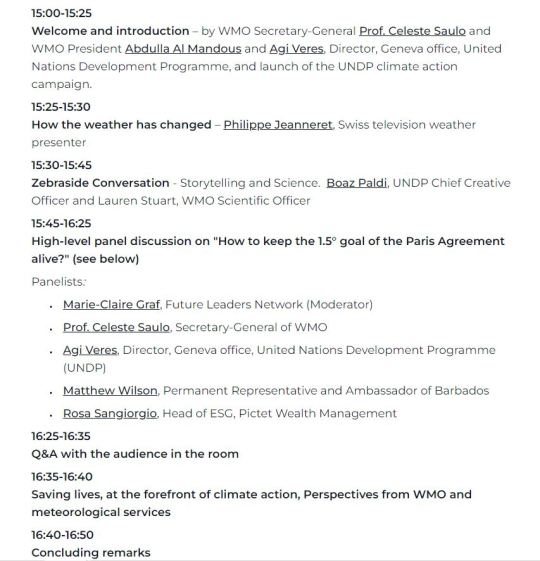
Join us for the World Meteorological Day 2024 celebration to spotlight climate action.
#meteorological and hydrological services#youth and civil society#policymakers#private sector#weather forecasting#climate action#sdg13#wmo#world meterorological organization
0 notes
Text

A close-up, on-the-ground view of Europe's next-generation satellites
Journalists have been given a up-close view of two very special spacecraft that will soon empower weather services in Europe with more and higher quality data for weather forecasting.
Metop Second Generation A1 and B1 (Metop-SGA1 and Metop-SGB1) are the first pair of a total of six satellites in the EUMETSAT Polar System—Second Generation (EPS-SG) system.
The first two satellites are undergoing testing and integration of their instruments at the Airbus Defense and Space cleanroom in Toulouse, France. It is anticipated they will be launched in 2025–2026 into their low-Earth, polar orbit, at about 835km altitude.
"The multi-billion euro EPS-SG system will be the main source of data for complex computer modeling used for advanced weather forecasting from 12 hours to 10 days ahead," EUMETSAT's EPS-SG Program Manager Fran Martinez Fadrique said.
"Its new and next-generation instruments will provide more and better data for weather and climate services in Europe until at least the mid-2040s. Studies show they will generate an estimated socio-economic return of 20:1 on our member states' investment through significantly improved weather predictions."
The data from the first-generation Metop satellites have been the single biggest contributor to accuracy of weather forecasts 12 hours to 10 days in advance. The second-generation Metop satellites will provide more, and higher resolution, data, EUMETSAT's EPS-SG Program Scientist Dr. Rosemary Munro said.
"This system, together with the third generation of our geostationary Meteosat satellites, the first of which was launched less than a year ago, will enable a new era of weather forecasting in Europe," Munro said.
"Most importantly, we know the benefits of this crucial space infrastructure will be felt by the citizens in our member states through more accurate and timely weather forecasts which will help save lives and livelihoods.
"The data from this system has many uses beyond weather forecasting. From monitoring wildfires and plumes of volcanic ash, from aiding maritime safety to helping to predict droughts through to monitoring the hole in the ozone layer, these satellites will provide a wealth of data about the Earth system.
"Additionally, the Metop-SGA satellites will carry the European Union's Copernicus Sentinel-5 instrument, which will aid monitoring and prediction of air pollution."
Martinez Fadrique said the EPS-SG system represents a new chapter in an established European success story that has resulted in Europe being a world leader in satellite meteorology.
"This success was possible because of the model of cooperation between EUMETSAT and the European Space Agency (ESA), harnessing European scientific and industrial expertise and the commitment of European industry," he said.
"The requirements for the new satellites are defined by EUMETSAT through consultation with scientists and users of their data, primarily the national meteorological and hydrological services of our 30 member states and the European Center for Medium-Range Weather Forecasts.
"ESA then procures the spacecraft to meet those requirements. These Metop-SG satellites have been developed under ESA contract by a European industrial consortium led by Airbus Defense and Space.
"To operate these spacecraft, and our existing satellites, and to receive, process, disseminate and archive the vastly increased amount of data produced by their instruments, EUMETSAT has developed sophisticated ground systems in high-tech mission control centers at its Darmstadt headquarters."
The EPS-SG system is part of the European-United States' Joint Polar System. Under this arrangement, data from EUMETSAT's and the United States National Oceanic and Atmospheric Administration's (NOAA) polar-orbiting satellites are shared, bringing benefits to weather forecasting and climate monitoring to both sides.
IMAGE....Two Metop-SG satellites: Metop-SGB in the forefront and Metop-SGA in the back, in the Airbus cleanroom. Credit: European Organisation for the Exploitation of Meteorological Satellites (EUMETSAT)
2 notes
·
View notes
Text
Sunday, August 6, 2023
Vermont’s flood-wracked capital city ponders a rebuild
(AP) A beloved bookstore in Vermont’s small capital city moved across the street to a new spot farther from the Winooski River after an ice jam sent river water into the store in 1992. A nearby office supply and gift store did the same in 2011 because it liked a different space that came with a bonus: it was higher and farther from the river. But their moves to higher ground weren’t enough to save them from flooding after torrential rains in July caused what some saw as the state’s worst natural disaster since a 1927 flood that killed dozens of people and caused widespread destruction. Some communities suffered more severe flood damage this year than when Tropical Storm Irene ravaged the small, mountainous state in 2011. Now the mostly gutted shops, restaurants and businesses that lend downtown Montpelier its charm are considering where and how to rebuild in an era when extreme weather is occurring more often.
Thousands overwhelm New York’s Union Square for streamer giveaway, tossing chairs and pounding cars
(AP) A crowd of thousands that packed Manhattan’s Union Square for a popular livestreamer’s hyped giveaway got out of hand Friday afternoon, with some clambering on vehicles, hurling chairs and throwing punches, leaving police struggling to rein in the chaos. Aerial TV news footage showed a surging, tightly packed crowd running through the streets, scaling structures in the park and snarling traffic. Shouting teenagers swung objects at car windows, threw paint cans and set off fire extinguishers. Some people climbed on a moving vehicle, falling off as it sped away. Others pounded on or climbed atop city buses. By 5:30 p.m., police officers in growing numbers had regained control of much of the area, but small skirmishes were still breaking out, with young people knocking over barricades and throwing bottles and even a flowerpot at officers. Officers arrested 65 people, including 30 juveniles.
Lake Titicaca drying up as heat wave turns winter upside down
(Reuters) The parched shoreline and shrinking depths of Lake Titicaca are prompting growing alarm that an ago-old way of life around South America’s largest lake is slipping away as a brutal heat wave wreaks havoc on the southern hemisphere’s winter. Like many places suffering deadly consequences of climate change, the sprawling freshwater lake nestled in the Andes mountains on Bolivia’s border with Peru now features a water level approaching an all-time low. Titicaca is only 30 cm (1 foot) away from reaching its record low of 1996 due to severe drought, said Lucia Walper, an official with Bolivia’s hydrology and meteorology service. Farmers in the adjacent Huarina community are desperate for help. Historic drought in South America has also slammed neighboring Argentina’s crucial farm sector, prompting the International Monetary Fund to forecast a 2.5% economic contraction this year as a result.
Mediterranean fires offer lessons—and warnings—for Europe
(Washington Post) As the Mediterranean’s summer heat waves grow fiercer, so too do its ravenous wildfires. They killed 34 people in Algeria last month. In Greece, 19,000 were forced to evacuate. Italian firefighters tackled 1,400 fires in just three days last week. In Tunisia, where temperatures soared to 120 degrees, families are picking up the pieces after scores of homes and farmlands were engulfed by flames. Responses differed in each country. Some relied on a domestic firefighting plane fleet; others called for help. Wealthier nations had more elaborate evacuation and response plans than their poorer counterparts in North Africa. For experts, though, it all pointed to a frightening new reality: Wildfires are getting too severe, too frequent and persistent, and raging over too vast an area to contain without robust prevention measures. And the risk is spreading. “Southern Europe—Spain, Portugal, Greece, Italy—they struggle with wildfire; but as global warming continues, we’re talking about wildfires in the forests of Germany, Austria, Slovenia,” said Craig Clements, director of the Wildfire Interdisciplinary Research Center at San José State University. “It’s happening here. Europe knows it’s going to happen. They’re preparing for it.”
Russia’s war with Ukraine has generated its own fog
(AP) On the battlefields of Ukraine, the fog of war plagues soldiers. And far from the fighting, a related and just as disorienting miasma afflicts those who seek to understand what’s happening in the vast war. Disinformation, misinformation and absent information all cloud civilians’ understanding. Officials from each side denounce devious plots being prepared by the enemy, which never materialize. They claim victories that can’t be confirmed—and stay quiet about defeats. None of this is unique to the Russia-Ukraine conflict. Any nation at war bends the truth—to boost morale on the home front, to rally support from its allies, to try to persuade its detractors to change their stance. But Europe’s largest land war in decades—and the biggest one since the dawn of the digital age—is taking place in a superheated information space. And modern communications technology, theoretically a force for improving public knowledge, tends to multiply the confusion because deceptions and falsehoods reach audiences instantly.
Earthquake victims in Turkey and Syria still need our help
(Global Christian Relief) In the early morning hours of Feb. 6, 2023, residents of Turkey and northern Syria were awakened by rumbling. In Turkey alone, the magnitude 7.8 and 7.7 earthquakes killed more than 50,000 people and injured more than 100,000 others. At least 15 million people in all and 4 million buildings were affected. In Syria, nearly 8,500 were killed, including 2,000 children. More than 5 million people were left homeless, and more than half of Syria’s entire population was impacted. While those of us living in the West were briefly concerned with this tragedy, our attention has waned over the six months since. A war in Ukraine, protests across Iran, saber-rattling from North Korea, deadly heat waves across the continental United States and numerous other stories have captured our collective gaze. Yet the needs of those affected by the earthquakes remain great. In Turkey, an estimated 4 million children still require humanitarian assistance. More than 1.5 million people are still living in tents or temporary shelters, some without access to potable water. Many families are trying to survive in cramped, overcrowded conditions with as many as 20 living in a single tent, and countless children are struggling to cope with the mental anguish caused by the quake.
Pakistani police arrest former Prime Minister Imran Khan
(AP) Pakistani police on Saturday arrested former Prime Minister Khan at his home in the eastern city of Lahore. It’s the second time the popular opposition leader has been detained this year. Earlier Saturday, a court convicted him in an asset concealment case, handing down a prison sentence that could see him barred from politics. The Islamabad court issued the arrest warrant after convicting Khan, with police in Lahore moving quickly to take him from his home to the Pakistani capital. It’s a fresh blow to Khan’s bid to return to power. Since his ouster from power in a no-confidence vote in the parliament in April 2022, Khan has been slapped with more than 150 legal cases, including several on charges of corruption, terrorism and inciting people to violence over deadly protests in May that saw his followers attack government and military property across the country.
Flooded rivers, trapped residents test China’s disaster response
(Reuters) From coping with dangerously swollen rivers to helping residents trapped in waterlogged cities, China’s disaster-response systems are being put to the test after one of the strongest storms in years brought record rainfall that could take weeks to recede. Typhoon Doksuri battered northern China this week with extreme rain, breaking Beijing’s 140-year rainfall record and dumping volumes of rain that normally fall in a whole year in the populous province of Hebei. As the last of Doksuri’s rain drift into China’s northeastern border provinces, a region the size of Britain is grappling with the aftermath and the urgent tasks of safely discharging overflowing water from reservoirs and rescuing tens of thousands of people trapped in their homes. As of Thursday, more than 1.2 million people in Hebei had been taken to safety. The volume of rain that fell in the province exceeded the storage capacity of its large and medium-sized reservoirs by more than two-fold, state media said.
Thousands of teens to evacuate from World Scout Jamboree amid heat wave
(Washington Post) Members of the American, British and Singaporean contingents attending the World Scout Jamboree in Buan, South Korea, are preparing to pack up their tents and move out, as a heat wave caused hundreds of injuries and threatened to cut short the quadrennial international event. The moves come as hot weather and humid conditions have pushed hundreds at the event to seek medical help. Close to 1,500 people received treatment for insect bites, skin rashes and heat injuries on Friday, the event organizers said. At the opening ceremony days earlier, 139 people suffered heat injuries, headaches and abdominal pain, the event’s organizers said. The World Jamboree gathers tens of thousands of teens aged 14 to 18, plus adults, from Scout associations worldwide every four years.
Fighting has plunged Sudan into a humanitarian catastrophe, senior UN officials say
(AP) The conflict in Sudan has left 24 million people—half the country’s population—in need of food and other assistance, but only 2.5 million have received aid because of vicious fighting and a lack of funding, two senior U.N. officials said Friday. Eden Worsornu, director of operations for the U.N. humanitarian agency, and Ted Chaiban, deputy executive director of the U.N. children’s agency UNICEF, who just returned from Sudan, painted a dire picture of devastation and upheaval in Sudan, with no peace talks in sight. Worsornu said hotspots, such as the capital of Khartoum and the southern Kordofan and western Darfur regions, “have been shattered by relentless violence.” Nearly 4 million people have fled the fighting, facing scorching heat up to 48 degrees Celsius (118 F), and threats of attacks, sexual violence and death, she said.
Niger’s Coup Leaders Sever Ties With France, as Detained President Pleads for Help
(NYT) Niger’s coup leaders on Thursday said that they had severed military ties with France, their country’s former colonial ruler, throwing into uncertainty the future of 1,500 French troops based there, in a region of West Africa plagued with coups and Islamist insurgencies. The leaders of the coup also dismissed Niger’s ambassadors to France and the United States, another military partner, as well as the ambassadors to Togo and Nigeria, an essential trade partner. In an extraordinary move, the elected president of Niger, who has been locked up in the presidential palace by his own guards for ten days, wrote an opinion column published in The Washington Post calling on the United States and other allies to help restore constitutional order. “I write this as a hostage,” President Mohamed Bazoum said in his opinion essay, published on Thursday evening. “Niger is under attack from a military junta that is trying to overthrow our democracy.” He warned that attacks from jihadist groups could increase and that Russia could expand its influence in the region if the coup leaders remain in power.
Typhoons flooded her wedding. She waded down the aisle anyway
(Washington Post) It is a walk most brides never forget. But for one bride in particular, her journey down the aisle toward her future husband was particularly memorable on Sunday. It involved wading through water in a flooded church in the Philippines, as deadly typhoons unleashed heavy rainfall and wreaked havoc across the country. Footage taken inside the Barasoain Church in the city of Malolos, Bulacan province, shows Dianne Victoriano gliding down the flooded aisle, her white dress and long veil submerged in ankle-deep water. Guests surrounding her hitched up their own dresses. Some wore gum boots. Others paired flip-flops with their rolled-up trousers. Despite the venue being flooded after heavy rain swamped Bulacan province, the bride could be seen beaming as she walked through the water clutching a bouquet of pink and white roses. As some commentators on social media put it: “for wetter, for worse.”
2 notes
·
View notes
Text
On September 21, Vladimir Putin announced that Russia would officially begin conscripting people to fight in the country’s war against Ukraine. Contrary to what the bulk of media coverage has suggested, cisgender men aren’t the only people at risk of being sent to war. Some cisgender women and transgender people are at risk of being drafted, too — potentially a lot of them, given that the call-up could apply to as many as 1.2 million Russians. The Feminist Anti-War Resistance and the nonprofit Center-T recently spoke to legal experts about what cis women and trans people should know about the mobilization. Meduza summarizes their advice.
According to Tamilla Imanova, a lawyer from the Memorial Human Rights Center who recently spoke to the Feminist Anti-War Resistance (FAS), the women most likely to be called up for Russia’s mobilization are those who have degrees in certain fields as determined by Russian law: medicine, communications, computer engineering, hydrology and meteorology, printing, and cartography.
“All women are assigned to the third category of Russia’s reserve forces,” said Imanova. “Women with the rank of officer remain in the reserve until 50 years old, while all others are taken off at 45 years old. Unfortunately, the fact that women are in the third [of three] categories doesn’t mean they’ll necessarily be the last to be drafted.”
Instead, she said, who gets drafted will depend on which skills are in demand at the front. And this has already begun to play out: in just the last three days, there have been numerous reports in the Russian media of people with medical degrees receiving draft orders “en masse,” Imanova said.
Certain women in these categories, however, will be spared from mobilization — at least temporarily. According to Imanova, women in the following categories are eligible for deferment:
Women who have at least one child younger than 16 years old, as well as women who are at least 22 weeks pregnant;
Women in reserved occupations as spelled out by the Russian Government (though the only way to find out whether you’re in this category is to asked your employer; the official documents outlining which occupations are reserved are classified)
Women declared temporarily unfit for service due to health issues (for up to six months)
Women responsible for providing constant care to family members or to people with certain disabilities
Women whose mothers have four or more children under the age of 8 and who care for the children in place of their father
Women who work in the defense sector (only for the duration of their employment)
‘Some want to flee, but others can’t — because of their husbands and children’
One woman who works as a doctor spoke to the FAS about how her work has changed since mobilization was announced — and about her fear that she’ll be drafted. As a medical professional, she said, she’s required to report to her local military commissariat if summoned. She’s also not allowed to change her place of residence during mobilization without the military commissariat’s permission.
But because the Russian authorities are trying to have it both ways, maintaining that this mobilization is only “partial,” the doctor has had difficulty keeping up with the specifics, she told the FAS.
“I get my information about the ‘partial mobilization’ and its various odd rules from Telegram channels,” she said. “Every day, it's something new. We don’t get any clear information.”
The woman said a number of employees at her workplace were granted exemptions from the draft, but she wasn’t one of them — and it appears to be too late to get one.
In addition, she told the FAS, the higher-ups at her workplace don’t seem to be concerned about the mobilization at all. “It wasn’t until [September 23] that the head of my department learned that some people hadn’t been granted exemptions,” she wrote, “so 🤡.”
So far, said the woman, nobody at her hospital has received a summons — though it’s only been three days. “There’s one guy who [previously] served in the army,” she said, “and he’s been pale as a ghost.”
She told the FAS that she felt “anxious and panicky,” and that every time she’s found herself idle since mobilization was announced, she’s started shaking. “The other women are in shock, too; some of them are thinking about fleeing the country, while others can’t, because of their husbands and children. [...] The only good thing is that because I’m a woman, I don’t have ‘medic’ written on my forehead, so at least they won’t grab me off of the street.”
A lawyer’s advice for trans people
Despite the fact that Vladimir Putin’s mobilization order doesn’t mention trans people directly, many of them could still be subject to conscription. Center-T, an advocacy group for trans people in Russia, asked Alexander, a lawyer, what trans people seeking not to be drafted need to know.
According to Alexander, if a transfeminine person has a female gender marker in her passport and doesn’t have a degree in a "military occupational" field but was once included in the draft registry, she’s legally supposed to have notified her local military commissariat of her passport change when it was completed. Failing to inform the commissariate is punishable by a fine. Nonetheless, Alexander recommends that anybody in that situation keep quiet for now — unless they receive a summons, in which case he offered a template for requesting to be removed from the draft registry.
Transmasculine people who have male gender markers in their passports are probably not on the military authorities’ radar unless they’ve gone to their local commissariat and requested to be added to the draft registry, Alexander said. There is a chance, however, that somebody could be spotted by a law enforcement official and reported to his local military commissariat, which might require him to register for the draft. In that case, he should insist that he’s unfit for military service when he appears before the medical evaluation board, which every conscripted soldier is required to do before being sent to a combat zone.
In the past, however, the Russian Defense Ministry has done everything in its power to “disown” trans people, including by categorizing them as “unfit for military service” when there’s no legitimate reason to, according to Alexander. Even if a transmasculine person is deemed to be fit for military service after an initial medical evaluation, the lawyer said, he’s legally allowed to submit a written statement demanding an additional one — and that's likely his best option.
8 notes
·
View notes
Text
World Meteorological Day 2023: Theme, Significance, History
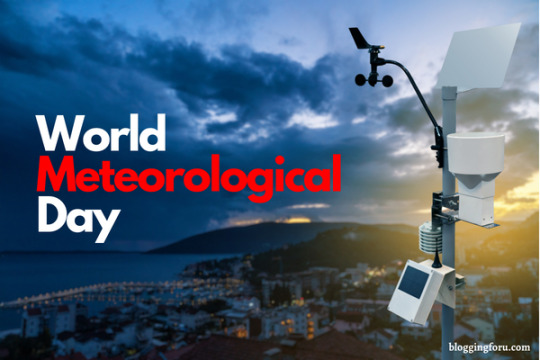
If you want to know about World Meteorological Day then you have come to the right place, we will give you all the information and you will know a lot of things and gain knowledge so let’s start.
bloggingforu Provides You with knowledgeable and Informational content.
World Meteorological Day 2023: History
The history of World Meteorological Day dates back to 1950, the year the World Meteorological Organization (WMO) was established. It is WMO an institution within the United Nations that coordinates and encourages international cooperation in fields of meteorology, hydrology as well as related sciences.
Its main objective is to facilitate the exchange of climate-related as well as weather information between members and promote the expansion of meteorological services around the globe. To commemorate its founding and commemorate its birth it was the WMO designated the 23rd day of March in the year 1961 as World Meteorological Day (WMD).
The first time, World Meteorological Day was observed on the 23rd day of March in 1961. Since then the day is celebrated every year for WMO WMO as well as its member countries to bring awareness to the importance of meteorology and the work of the group.
Every year, a specific theme is chosen that focuses on a particular aspect of meteorology, hydrology, or any other related science. The selected theme is meant to increase awareness and understanding about the subject and its importance to society.
World Meteorological Day 2023: Theme
The theme of World Meteorological Day 2023 is ‘The Future of Weather, Climate and Water across Generations’.
Significance of World Meteorological Day 2023

World Meteorological Day is significant because of several reasons:
1. Awareness This day offers the opportunity to raise awareness of the importance of meteorology, hydrology, and related sciences.
The day encourages an understanding by people of climate and weather-related issues and their effects on society, as well as the importance of meteorological agencies in protecting individuals and their property.
2. Collaboration and cooperation World Meteorological Day promote international cooperation in meteorology. It helps facilitate the sharing of weather and climate-related information between members as well as the expansion of meteorological services around the world.
3. Displaying Innovation Day of Innovation: This day provides an opportunity for meteorological organizations, researchers as well as research institutes, and other industries related to dealing with weather to showcase their research and showcase the products they offer, and their services.
It highlights the latest advancements in forecasting, monitoring weather monitoring, climate monitoring, and other related fields.
#World Meteorological Day#World Meteorological Day 2023#Meteorological Day#Meteorological#blog#bloggingforu#blogger#digital marketing
2 notes
·
View notes
Text
March 23:World Meteorological Day
World Meteorological Day
Every 23 March, the World Meteorological Organization commemorates the coming into force of the Convention establishing the World Meteorological Organization on 23 March 1950.
It showcases the essential contribution of National Meteorological and Hydrological Services to the safety and wellbeing of society and is celebrated with activities around the world. The themes chosen for World Meteorological Day reflect topical weather, climate or water-related issues.
0 notes
Text
By • Olalekan Fagbade
Thunderstorms and strong winds will accompany heavy rains that will be experienced in the Federal Capital Territory(FCT) and 29 states in the next three days, the Nigerian Meteorological Agency (NiMet) has predicted.
The states are Ogun, Ondo, Osun, Edo, Rivers Cross River, Ebonyi, Abia, Imo, Delta, Bayelsa, Akwa Ibom. Kogi, Sokoto, Kebbi, Zamfara, Kaduna, Niger, Plateau, Nasarawa, Kano, Jigawa, Yobe, Borno, Adamawa, Bauchi, Kogi, Taraba and Gombe .
About half of the states in the North and the FCT will be worst hit by the three-day rainfall which, NIMet said, would cause flash floods, poor visibility and damage to weak structures.
It, therefore, advised people “to avoid flood waters and standing or parking cars under trees. Emergency agencies, like the National Emergency Management Agencies (NEMA), to be prepared.
The agency stated these in its ‘Heavy Rainfall Forecast Bulletin’, which was released hours after the Nigeria Hydrological Services Agency (NIHSA) dismissed the belief that Cameroon’s Lagdo Dam contributes heavily to flooding in Nigeria.
Part of the NiMet bulletin reads: “During the forecast period (the next three days), moderate to heavy rainfall is expected to affect parts of Sokoto, Kebbi, Zamfara, Kaduna, Niger, the FCT, Plateau, Nasarawa, Kano, Jigawa, Yobe, Borno, Adamawa, Bauchi, Kogi, Taraba, Cross River, Ebonyi, Abia, Imo, Delta, Bayelsa, Akwa Ibom, Ogun, Ondo, Edo, Osun, Gombe and Rivers State.
Read Also: Tinubu appoints new board, management of NDDC
YouTube Channel
00:00
Previous
PlayNext
00:00 / 06:55
Mute
Fullscreen
Copy video url
Play / Pause
Mute / Unmute
Report a problem
Language
Share
Vidverto Player
“Generally, the rains are expected to be moderate to heavy, accompanied by strong winds and thunderstorms.
“There are good chances of hydrometeorological hazards such as flash flooding of roads and low-lying settlements; disruption of traffic, reduction in visibility, and damage to weak structures by strong winds.
“Hence, the public is advised to exercise restraint during thunderstorms, avoid standing or parking cars under trees as much as possible, and avoid flood waters.”
Also in Abuja, NIHSA clarified that the recent floods in Nigeria were not due to the opening of the Lagdo Dam.
It blamed the development on flash floods, poorly constructed or lack of proper flood channels and inadequate drainage systems across the country.
Director-General of the agency Clement Nze told reporters that the Lagdo Dam was closed a few hours after the Cameroonian authorities opened it on Monday.
Nze, who gave no reason for the decision by Cameroon, explained that even if the Lagdo Dam were to collapse, its impact would not go past Numan in Adamawa State.
His words: “The Lagdo Dam is located on the Benue River in the Niger Basin. The Cameroonian authorities commenced release of excess water from Lagdo Dam by 10.10 am on August 14, 2023.
“The release of water from the Dam commenced at the rate of 200 cubic metres per second, which is about 18 million cubic metres of water per day.
“By 25th August 2023, the water releases from the reservoir has reduced to 50 cubic metres per second, which is a normal reservoir operation and far negligible to cause any flooding downstream.
“However, by 5.16 pm yesterday(Monday), the Hydrologist in charge of the dam notified the Director General of NIHSA that they stopped spilling water by 11.00 am that same yesterday(Monday).”.
The director-general said the agency would continue to monitor water flows in rivers Niger and Benue, saying readings by the agency showed no threat of floods.
Nze appealed for calm from the public, saying that flood warnings had been given to the states affected adversely since February.
The NIHSA chief advocated the construction of earth dams on the tributaries of the Niger and Benue rivers as well as the speedy completion of the Kashimbila Da
m in Adamawa State.
He also clarified that the 2016 Memorandum of Understanding (MoU) between Nigeria and Cameron does not require Cameroon to inform Nigeria before releasing water from the Lagdo Dam.
Nze said severe flooding with attendant damage and deaths could be minimised when relevant authorities took responsibility for preparedness and ensured that people don’t build on flood plains.
Meanwhile, the Edo and Taraba state governments have again advised residents of flood-prone areas to relocate.
Edo listed Agenebode in Etsako East, Anegbete in Etsako Central, Illushi in Esan South East,
Ikpoba Okha, Ovia North-East and Ovia South-West as Local Governments that would be most affected by the impending flood.
Taraba, on its part, said Karim-Lamido, Lau, Ardo-Kola, Gassol, Wukari and Ibbi councils are dangerous areas
#Heavyrainfall #Nigerians #publicalert #stateswithrainfall
0 notes
Text
The World Meteorological Organization
The World Meteorological Organization
The World Meteorological Organization (WMO) is a specialized agency of the United Nations responsible for promoting international cooperation on atmospheric science, climatology, hydrology and geophysics.
What we do
As a specialized agency of the United Nations, WMO is dedicated to international cooperation and coordination on the state and behaviour of the Earth’s atmosphere, its interaction with the land and oceans, the weather and climate it produces, and the resulting distribution of water resources.
National Meteorological and Hydrological Services work around the clock to monitor Earth Systems and provide vital weather and climate information worldwide. Their early and reliable warnings of severe weather and fluctuations in air quality as well as of climate variability and change allow decision-makers, communities and individuals to be better prepared for weather and climate events. Their warnings help save life and property, protect resources and the environment and support socio-economic growth. WMO supports National Meteorological and Hydrological Services with this work and in meeting their international commitments in the areas of disaster risk reduction, climate change mitigation and adaptation, and sustainable development.
WMO facilitates and promotes:
Stock Strategy
the establishment of an integrated Earth System observation network to provide weather, climate and water-related data
the establishment and maintenance of data management centres and telecommunication systems for the provision and rapid exchange of weather, climate and water-related data
the creation of standards for observation and monitoring in order to ensure adequate uniformity in the practices and procedures employed worldwide and, thereby, ascertain the homogeneity of data and statistics
the provision of weather, climate and water-related services - through the application of science and technology in operational meteorology and hydrology - to reduce disaster risks and contribute to climate change adaptation, as well as for sectors such as transport (aviation, maritime and land-based), water resource management, agriculture, health, energy and other areas
activities in operational hydrology as well as closer cooperation between National Meteorological and Hydrological Services in states and territories where they are separate
the coordination of research and training in meteorology and related fields.
Through its Technical Commissions, Programmes, Projects and Regional Offices, as well as its synergistic and public-private partnerships, WMO facilitates and coordinates an Earth system approach to the gathering and free exchange of observations, promotion and integration of research and the development and delivery of services in the areas of weather, climate and water.
The activities of WMO facilitate the maintenance and expansion of its Members' atmospheric, oceanographic and land-based observational networks; the free unrestricted exchange of the resulting data and information; and related capacity development and research in order to optimize the production of weather, climate and water-related services worldwide.
Best Stock Strategy
Stock trading Strategy
The WMO Operating Plan 2020-2023 translates the WMO Strategic Plan - which articulates the high-level vision, mission, core values and overarching priorities of the Organization - into specific actions by defining outputs to be delivered and annual milestones to be achieved. It also lists planned activities, indicates the resources available, and outlines performance indicators intended to measure progress in achieving the strategic objectives
Long-Term Goal 1: Better serve societal needs: Delivering, authoritative, accessible, user-oriented and fit-for-purpose information and services
Long-Term Goal 2: Enhance Earth system observations and predictions: Strengthening the technical foundation for the future
Long-Term Goal 3: Advance targeted research: Leveraging leadership in science to improve understanding of the Earth system for enhanced services
Long-Term Goal 4: Close the capacity gap on weather, climate, hydrological and related environmental services: Enhancing service delivery capacity of developing countries to ensure availability of essential information and services needed by governments, economic sectors and citizens
Long-Term Goal 5: Strategic realignment of WMO structure and programmes for effective policy- and decision-making and implementation
In order to achieve its long-term goals, WMO assists Members with technology transfer, training for capacity development, collaboration on research and the provision of weather, climate and water-related services. The Organization also contributes to policy formulation in areas related to weather, climate and water at national and international levels.
0 notes
Text
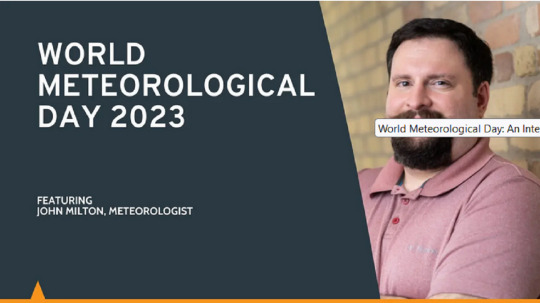
World Meteorological Day: An Interview with our Senior Meteorologist
Each year on March 23rd, World Meteorological Day takes place to commemorate the Convention establishing the World Meteorological Organization, which happened in 1950. World Meteorological Day recognizes the contribution of meteorology and hydrology to the safety and development of society. This year’s theme, The Future of Weather, Climate, and Water Across Generations, is a fitting topic as we sit down with our Lead Meteorologist, John. We discuss his story, the history of this relatively new science, and why weather matters for electrical grids.
Tell us about you and why you decided to become a meteorologist.
My story is probably not too different from most meteorologists out there. I mean, we call ourselves energy nerds at Peak Power, and I’m pretty much a weather nerd. That stems from essentially a childhood wonder of the weather. But in my case, it’s a little more specific. Throughout my childhood, I had a severe phobia of thunder and lightning. At the age of about 11, there was a severe lightning storm happening at night, the typical time when my fear was at its height. At that moment, I decided to face my fear, so I opened a window to peek outside. For the first few seconds, I was paralyzed by fear. But then something happened. That fear immediately transformed into pure awe. I stared directly into the storm to find purple lightning and saw the real beauty of the cloud formations. All my senses lit up. As you age, the rational part of your brain starts to activate; it goes from that innocent fear to questioning why you’re afraid of something. That’s precisely what happened to me, and I think any good scientist starts out with questioning. That began my experimentation, pouring myself into this realm and challenging myself to ask why I was scared. Shortly after that, I dove into everything weather. I started looking at the National Weather Service forecast. I started making my own forecast for Rochester, which is the town where I grew up in upstate New York, an area that’s prone to all kinds of weather. As an example, I experienced the ice storm in 1991 – that was the most significant ice storm I’ve ever seen in my life. It was beautiful but destructive. I even visited the local TV meteorologist after that, at about the age of 12. He introduced me to his forecasting process (and even made some suggestions for top-notch universities offering meteorology programs), which further galvanized my interest in making this a career.
What do you see as the biggest contributions of meteorology to society?
Like any good scientist, I’m looking at all sides, so I explored both the positive and negative contributions. To start, forecasting is a very new science, whereas observations have been collected in North America and Britain since roughly the mid-to-late 19th century. One of the most impactful weather forecasts was made in the days leading up to the Allied Forces’ storming of the beaches of Normandy on D-Day. [Side note: The meteorological component of this historic day is a riveting story for any history buff. Read about it on History.com] From there, the science of forecasting really blossomed. The emergence of what’s called numerical weather prediction, which is a fancy way of saying weather model data, is used as a way of trying to compute and calculate the future state of the atmosphere. And the atmosphere is a chaotic fluid. So, you’re basically trying to forecast chaos. Numerical weather prediction originated in the 1950s and has since evolved to create more timely, accurate weather forecasts, including life-threatening phenomena such as tornadoes, hurricanes and severe thunderstorms. Prior to the 1990s, the lead time for the public to take shelter from tornadoes was usually less than 15 minutes. Now, I want to say it’s around 20 to 30 minutes. It may not sound like much, but that’s huge. That saves lives. The weather models have improved tremendously, even in the last 15 years alone since I started my career. As a result of that, we are seeing more reliable forecasts that can save lives and property. That’s why I decided to choose “operational” meteorology as a career as opposed to being purely a research meteorologist. One of my main jobs is to interpret weather model data and add value to the output, thus making a positive contribution to society. The negative aspect goes somewhat hand in hand. We live in a time where information, not just weather information, is readily available at your fingertips, which is both good and bad. It’s good because it’s convenient for the general population. It’s bad because most consumer apps just ingest raw model data with little to no human intervention. And if it is only referencing one model, and that model happens to be poorly handling the near-term weather situation, it’s likely going to give you a poor forecast. This is even more pronounced in complex weather situations like storms – for example if a warm front is being resolved incorrectly by one model, that could be the difference between 10 mm of freezing rain and 20 cm of snow. A meteorologist takes an ensemble approach, looking at multiple weather models to produce the most accurate forecast. In meteorology, there’s no AI that can replace human ingenuity and interpretation.
What’s an interesting fact about meteorology that readers might not know?
You know that unique smell right after a lightning storm? What you’re actually smelling is ozone. And by that process, it is actually returning nitrogen to the soil. The other thing that I would want readers to know is about something called positive flash lightning. It’s sometimes commonly referred to as a “bolt out of the blue.” Typically, it happens on the backside of the storm as the storm is departing you and originates in the anvil of a cloud. On a side note, what happens with an anvil cloud is that there is a very clear demarcation of the top of the atmosphere before we reach the stratosphere. The stratosphere is extremely stable, so it prevents clouds from building upward. That flash lightning originates all the way from the top of the anvil, which could be 40,000 to 50,000 feet. Whereas normal cloud-to-ground lightning originates from the mid-to-low levels of the cloud, maybe 5,000 to 15,000 feet – and those carry much less voltage. So because flash lightning originates from so high up, it encounters much more resistance and can carry up to a billion volts. And those are the lightning strikes that can be very hazardous to people and property. Even if it is not a direct hit, it can still be fatal. So, I’d strongly advise waiting at least 30 minutes after a storm passes before venturing outdoors again. You want to make sure you can’t hear any thunder at all before resuming outdoor activities.
What role do you think the broader meteorological community has to play in preserving our environment and fighting climate change?
I will preface by saying I’m not a climatologist; I’m a meteorologist. There’s a difference which we will go into a bit later. But for me, the folks that are doing those rigorous studies of ice cores, global temperature increases, historical and forecasted trend need to responsibly communicate that data to the public and not tweaked to sensationalize – on either side – it dilutes the science. The reality is that since the industrial revolution, we’ve done a tremendous amount of damage, and frankly, a lot of it may not be reversible. However, it doesn’t mean we should sit on our hands and do nothing. If we have enough awareness of that data at the public level, we can make decisions that can mitigate further damage.
How does the theme The Future of Weather, Climate and Water across Generations resonate with you?
I didn’t even realize there was such a thing as World Meteorological Day when I went to school for Meteorology. But it’s been around for like 50 years, so that was neat to learn, and it gives us a chance to talk about it. To start, I would refer to myself as an operational meteorologist, which is about forecasting the weather and marrying it with how it impacts real life – in the case of Peak Power, how it impacts grid demand. That’s how it resonates with me; it demonstrates how interpreting weather model data is critical to our society in very real ways.
Could you tell us a bit more about your work with Peak Power? What does weather have to do with energy?
My core role is to forecast grid peaks and grid demand in select ISO regions. Ultimately, the electrical grid is largely driven by weather events. Weather influences human behaviours such as blasting the AC in a summer heat wave or cranking the heat in a winter cold snap. [See 2021 Texas Power Crisis] However, I’m not just forecasting but researching how weather, load, and demand are interconnected and how they interact, sometimes, at a very localized level (for example, one region within a large ISO or a state). Other aspects that impact grid demand are things like solar generation; it’s a big component. One of my jobs is to assess the data and cloud forecast for embedded solar plants and what we expect those generation trends to be. There’s a term in meteorology that is a critical component in value addition to the models: Pattern Analog Recognition. This can be illustrated by an example. If you’re looking at cloudy weather over Eastern Ontario, where most of the solar plants are located, and sunny, oppressively hot weather over southern Ontario, including the GTA, that’s usually going to be a ripe setup for a significant grid peak. Such peaks are important to forecast accurately so that our customers can reduce their associated coincident peak charges, as well as avoid using dirty resources that come online to meet demand during those peaks.
What is one aspirational statement or dose of good news you want to leave readers with?
This may sound really corny, but this is something I think a lot of weather geeks do. I encourage you and others to do it. And that’s to look toward the sky. For me, it’s almost as second nature as breathing or having my espresso. Every time I’m outside, I always look up to the sky because you never know what you’re going to find. They always say each snowflake is unique, but every single cloud formation is also unique. Every single sunrise and sunset is unique. No two are exactly the same. We’re always so buried in our phones and our technology that sometimes, we forget to take a moment to marvel at the grandeur of nature that surrounds us.
1 note
·
View note
Text
World Meteorological Day is held annually on March 23 to remember the establishment of the World Meteorological Organization in 1950
World Meteorological Day is held annually on March 23 to remember the establishment of the World Meteorological Organization in 1950. The day also highlights the contribution of meteorological and hydrological services to the safety and well-being of human societies.
The World Meteorological Organization plays a crucial role in contributing to people’s safety and welfare. Its work is essential in…
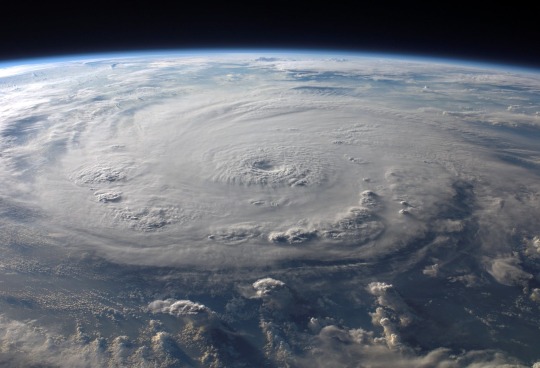
View On WordPress
#climate#The World Meteorological Organization#water-related issues#weather#World Meteorological Day
0 notes
Photo

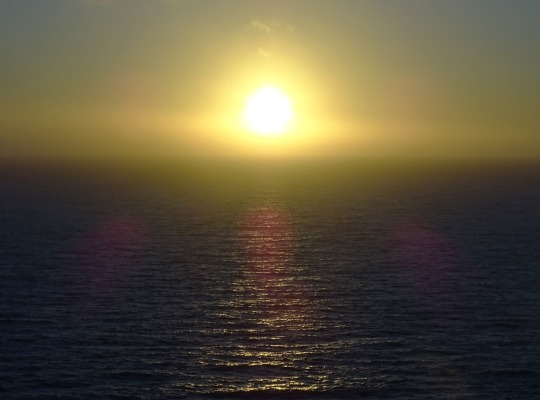
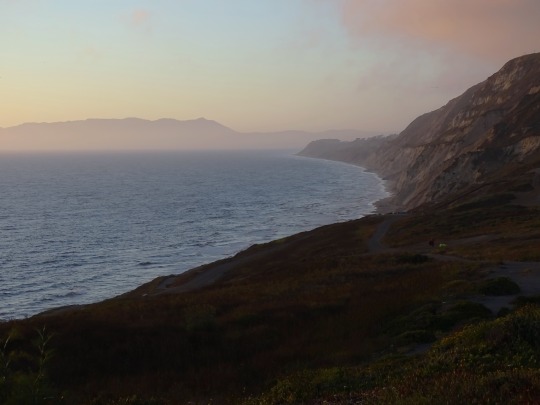




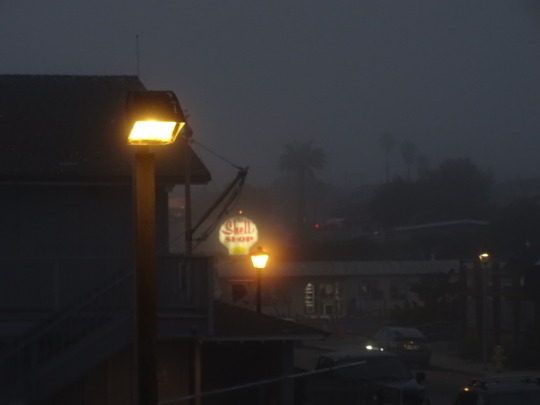


World Meteorological Day
World Meteorological Day is an annual global celebration observed on March 23rd. All of us do depend on the weather forecasts in everyday life. Only with this forecast, we can predict what the forthcoming day or week brings us regarding temperature. The study of meteorology dates back millennia, and the significant breakthroughs in the weather forecasting have occurred in the latter half of the 20th century. Every other advancement made in this field has an international cooperation, and the expertise is working in the World Meteorological Organization (WMO) has been delivering the high-quality, accurate weather details. World Meteorological Day is celebrated in remembrance of the World Meteorological Organization’s establishment in 1950.
“Sunshine is delicious, rain is refreshing, wind braces us up, snow is exhilarating; there is really no such thing as bad weather, only different kinds of good weather.” – John Ruskin
History of World Meteorological Day
The World Meteorological Day has been in celebration since the year 1961. World Meteorological Organization (WMO) has founded this celebration event. It is a Day created to commemorate the establishment of the WMO on March 23, 1950. Since then the Day is celebrated all over the world by the member states of the meteorological organizations. WMO is an intergovernmental organization originated from the International Meteorological Organization (IMO) with a membership of 191 Member States and Territories. The IMO was founded in the year 1873 at the first International Meteorological Congress in Vienna, Austria. The IMO aims to establish the meteorological station networks and to link those networks by telegraph and improved weather forecasts which eventually has contributed to the safer and efficient shipping services.
The International Meteorological Organization had become the World Meteorological Organization. The Convention of the WMO was established by the ratification on March 23rd, in 1950. WMO became the UN’s specialized agency for meteorology, operational hydrology and related geophysical sciences a later, i.e. in 1951. WMO is the specialized agency of the United Nations. It is the UN system’s authoritative voice upon the state and behaviour of the Earth’s atmospheric condition, its interaction with the oceans, the climate it produces and the resulting distribution of the water resources. WMO is playing a crucial role in safeguarding the earth’s environment and contributing to the people’s welfare and safety. The works of WMO are significant in contributing to the food security, water resources and transportation.
The leadership for WMO programs for the National Meteorological and Hydrological Services provides a lot of help by protecting the life and property of humans from the natural disasters. The World Meteorological Organization is headquartered in Geneva, Switzerland and is headed by the Secretary-General and World Meteorological Congress is its supreme body. The Day is celebrated annually by organizing a variety of programmes, conferences, exhibitions, and activities. The WMO organizes the Scientific and Technical Forum that discusses an outline of all the past activities and achievements of the World Weather Watch. A theme is chosen to celebrate this Day ever since the first occurrence and are stated as below.
How to Celebrate World Meteorological Day
Celebrating the World Meteorological Day is quite simple. Take this day as the best chance to get to know about your country’s metrological condition and the history in detail. You can participate in the events, conferences, exhibitions conducted for the meteorological professionals, community leaders and the general public. Present your contributions to get the WMO Awards as WMO is recognizing the most outstanding credits of the young scientists and engineers in the field of meteorology. The Day is celebrated in many countries by issuing the postage stamps or special postage stamp cancellation as to mark this celebration. These stamps will often reflect the theme of the event or mark a country’s meteorology achievements.
Source
#Arches National Park#Kayenta#Daly City#Morro Bay#Pacific Ocean#USA#World Meteorological Day#summer 2022#23 March#WorldMeteorologicalDay#blue sky#fog#sunset#clouds#landscape#cityscape#seascape#travel#original photography#Colorado National Monument#nature#countryside#marina#vacation#windy#rain clouds#summer fog
1 note
·
View note
Text
Statement of the WMO Secretary-general on World Meteorological Day; March 23rd.

Happy World Meteorological Day. As you know this is my first celebration of World Meteorological Day as Secretary-General of the World Meteorological Organization. Previously, I also celebrated this day at the Argentinean Meteorological Service, because it is a unique opportunity to increase awareness of who we are, what we do, and why we do it. National Meteorological and Hydrological Services - WMO Members – are key players in our fight against climate change. Indeed, the WMO community provides tools and knowledge on both climate change mitigation and adaptation. It is therefore fitting that the theme of this year’s World Meteorological Day is “On the Frontline of Climate Action.” Climate Action means different things to different people. But all agree that it is indispensable. And it is urgent. And it is a call for everybody. We must all pull in the same direction. Our meteorological and hydrological communities gather, disseminate, and analyze weather, water, and environmental data. These are the basis for understanding what is happening with climate now and how it has been changing. We cannot manage what we do not measure, and this is where WMO is ideally placed. We have a proud history of more than 150 years of sharing data and best practices. That is our strength. We are building on that strength to provide information to support mitigation.
For this reason, we launched the WMO’s Global Greenhouse Gas Watch. We need more measurements to support decision making and climate action.But mitigation is not enough. Adaptation is a MUST. For many, this is a matter of life and death. As a matter of priority, hydro-meteorological services around the world are engaged in improving their early warning systems, which are the linchpin of adaptation and disaster risk reduction. However, as of today, many countries are not able to provide these early warnings to protect their people. This is why, as part of the global community, we embarked on the 'Early Warnings for All' initiative. Every person on Earth needs to have access to timely, authoritative, and life-saving weather and climate risk information by the end of 2027. Climate and weather affect nearly every single activity. For instance, renewable energy systems, including wind, solar and hydropower; agricultural production; fisheries; transportation; health. Weather and climate information fuels economic growth.
We need to do more to turn climate science into services. And we need to make these climate services more accessible and to use them more efficiently.
On World Meteorological Day, National Meteorological and Hydrological Services take center stage. They are pivotal for risk reduction, development, adaptation, mitigation and sustainability. We must ensure that their expertise feeds into high-level policy on climate action. As WMO Secretary-General, I am committed to working together with each NHMS to make sure that this value cycle is impactful at national, regional and global levels. This is about fostering inclusivity and sustainable pathways. In the face of unprecedented environmental challenges, we are not mere observers. Rather, we are called to be game changers. Our role as scientists and advocates for the planet has never been more crucial. The lives of future generations are in our hands. Our efforts today will ensure a safer, healthier world for future generations —a world where children thrive in harmony with nature.
Together we stand at the Frontline of Climate Action; As we leverage our collective expertise for the greater good and shape a resilient tomorrow. I thank you and Happy World Meteorological Day.
World Meteorological Organization (WMO) secretary-general.
vimeo
#statements#climate change#early warning system#worldmetday#23 march#world meteorological organization#meteorology#climate action#climatology#climate#climatologists#climate crisis#Hydrological Services#meteorological services#sdg13#Vimeo
0 notes
Text

A close-up, on-the-ground view of Europe's next-generation satellites
Journalists have been given a up-close view of two new spacecraft that will soon empower weather services in Europe with more and higher quality data for weather forecasting.
Metop Second Generation A1 and B1 (Metop-SGA1 and Metop-SGB1) are the first pair of a total of six satellites in the EUMETSAT Polar System—Second Generation (EPS-SG) system.
The first two satellites are undergoing testing and integration of their instruments at the Airbus Defense and Space cleanroom in Toulouse, France. It is anticipated they will be launched in 2025–2026 into their low-Earth, polar orbit, at about 835km altitude.
"The multi-billion euro EPS-SG system will be the main source of data for complex computer modeling used for advanced weather forecasting from 12 hours to 10 days ahead," EUMETSAT's EPS-SG Program Manager Fran Martinez Fadrique said.
"Its new and next-generation instruments will provide more and better data for weather and climate services in Europe until at least the mid-2040s. Studies show they will generate an estimated socio-economic return of 20:1 on our member states' investment through significantly improved weather predictions."
The data from the first-generation Metop satellites have been the single biggest contributor to accuracy of weather forecasts 12 hours to 10 days in advance. The second-generation Metop satellites will provide more, and higher resolution, data, EUMETSAT's EPS-SG Program Scientist Dr. Rosemary Munro said.
"This system, together with the third generation of our geostationary Meteosat satellites, the first of which was launched less than a year ago, will enable a new era of weather forecasting in Europe," Munro said.
"Most importantly, we know the benefits of this crucial space infrastructure will be felt by the citizens in our member states through more accurate and timely weather forecasts which will help save lives and livelihoods.
"The data from this system has many uses beyond weather forecasting. From monitoring wildfires and plumes of volcanic ash, from aiding maritime safety to helping to predict droughts through to monitoring the hole in the ozone layer, these satellites will provide a wealth of data about the Earth system.
"Additionally, the Metop-SGA satellites will carry the European Union's Copernicus Sentinel-5 instrument, which will aid monitoring and prediction of air pollution."
Martinez Fadrique said the EPS-SG system represents a new chapter in an established European success story that has resulted in Europe being a world leader in satellite meteorology.
"This success was possible because of the model of cooperation between EUMETSAT and the European Space Agency (ESA), harnessing European scientific and industrial expertise and the commitment of European industry," he said.
"The requirements for the new satellites are defined by EUMETSAT through consultation with scientists and users of their data, primarily the national meteorological and hydrological services of our 30 member states and the European Center for Medium-Range Weather Forecasts.
"ESA then procures the spacecraft to meet those requirements. These Metop-SG satellites have been developed under ESA contract by a European industrial consortium led by Airbus Defense and Space.
"To operate these spacecraft, and our existing satellites, and to receive, process, disseminate and archive the vastly increased amount of data produced by their instruments, EUMETSAT has developed sophisticated ground systems in high-tech mission control centers at its Darmstadt headquarters."
The EPS-SG system is part of the European-United States' Joint Polar System. Under this arrangement, data from EUMETSAT's and the United States National Oceanic and Atmospheric Administration's (NOAA) polar-orbiting satellites are shared, bringing benefits to weather forecasting and climate monitoring to both sides.
IMAGE....Two Metop-SG satellites: Metop-SGB in the forefront and Metop-SGA in the back, in the Airbus cleanroom. Credit: European Organisation for the Exploitation of Meteorological Satellites (EUMETSAT)
1 note
·
View note
Video
youtube
Welcome to the news channel of the Angry Nature, Today we will tell you about Montebello tornado, California, Yellowstone supervolcano 👇 https://youtu.be/Z7uHxApKnRE Rare tornado 22 March Montebello,California,2 injured as SoCal tornadoes damage dozens of structures, snapping beams and ripping off roof. A tornado hit the city of Montebello in Southern California, damaging buildings as the National Weather Service assesses the rare weather event. The tornado hit Wednesday at about 11:20 a.m. PT in the city less than 10 miles of Los Angeles, the National Weather Service said. #tornado #montebello #angry_mature #montebello_tornado #california_tornado _______________________________ The channel lists such natural disasters as: 1) Geological emergencies: #earthquake #volcanic_eruption mudflow, #landslide landfall, avalanche; 2) Hydrological emergencies: #flash_flood #tsunami Limnological catastrophe, floods, flooding; 3) Fires: Forest fire, Peat fire, Glass Fire, Wildfire; 4) Meteorological emergencies: #tornado, ATTENTION: All videos are taken from open sources. The selection is based on publication date, title, description, and venue. Sometimes, due to unfair posting of news on social networks, the video may contain frames that do not correspond to the date and place. It is not always possible to check all videos. We apologize for any errors! Thank you for watching, don't forget to subscribe our channel, We Wish you good Weather,
0 notes
Text
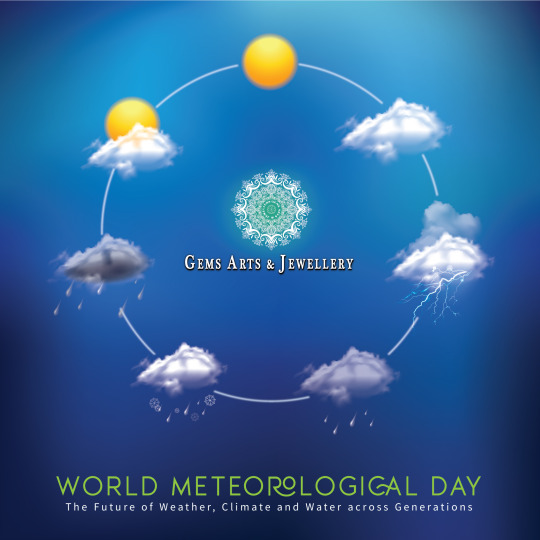
World Meteorological Day takes place every year on March 23 and commemorates the essential contribution of national meteorological and hydrological services to the safety and wellbeing of society. It is celebrated with activities around the world.
[src.: https://public.wmo.int/en/resources/world-meteorological-day]
#gemsartsjewellery#world#meteorogicalday#WorldMeteorologicalDay#preservation#Save#Lazimpat#kathmandu#kathmanduvalley#nepal#diamonds#gold#silver#gemstonesforsale#jewellery#lazimpat#gems
1 note
·
View note
Text
NEMA Issues Fresh Warning To Nigerians over another Severe Flooding
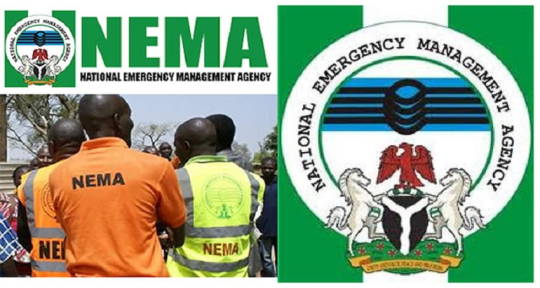
Mustapha Ahmed, the Director-General of the National Emergency Management Agency, has issued a warning to Nigerians. The agency issued a warning of upcoming severe flooding this year as indicated by predictions from relevant agencies. A statement issued by the agency noted that Ahmed disclosed at a two-day Experts’ Technical Meeting on 2023 Climate-Related Disaster Preparedness and Mitigation Strategies in Abuja.
He said that this had earlier been revealed in the seasonal climate predictions and annual flood outlooks by the Nigerian Meteorological Agency and the Nigeria Hydrological Services Agency. He said, “The flood disaster in 2022 was an eye-opener. However, the agency would spread early warning messages to states and local government areas and the Federal Capital Territory.
“We have started early this year, as we are ready for early warning and early action. We will bombard every citizen, state and local government with this information as we want them to know that it is serious and we will not keep quiet, because we want them to know that there will be flood this year.” He further advised that those living around water channels and floodplains should take precautions.
In the same vein, the Director-General of Nigeria Hydrological Services Agency, Clement Nze, disclosed that 178 LGAs in 32 states and the FCT had been predicted to experience severe flooding in 2023.
He said, “This time, we came out early with this prediction and we expect that relevant actors, governments, and individuals will go to work. We expect that actions should be taken, especially at the sub-national levels, early enough, to mitigate the impact of flooding in the country.”
Read the full article
0 notes